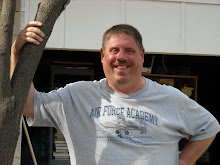
After the war was over, the future of CAP was in doubt. As the nation demobilized and cut back on military and defense spending, the services were looking at where they spent every dollar. In March of 1946, the U.S. Army Air Force announced that it would cut off funding to CAP which had been transferred to the USAAF from the Office of Civilian Defense in 1943. Determined to save CAP, the commander of the USAAF, Gen. Henry "Hap" Arnold convened a meeting in Washington of CAP's senior commanders in order to try and save the organization and chart a course for it's future. The result was the creation of Civil Air Patrol, Incorporated a civilian not for profit corporation. Later in 1948, Congress passed Public Law 557 making CAP the official civilian auxilliary of the newly created and independent United States Air Force.
It was at this time that CAP's three main missions were established: 1)Aerospace Education: CAP was to educate the public about aviation and flying and train future leaders for an increasingly aerospace and technology oriented society. 2)Cadet Programs: CAP was to establish a cadet training program to educate and develop youths as future leaders for service to the nation. 3)Emergency Services: CAP's most visible role was to provide an organization trained to provide search and rescue aircraft and ground teams to assist in locating downed aircraft, lost persons, and assistance to local authorities in the event of natural or manmade disasters.
CAP continues to fullfill these three core missions to this day. The technology and circumstances have changed some through the years, but what has remained unchanged is the volunteer spirit and dedication of CAP members.
The photo is another from the CAP online museum at www.gocivilairpatrol.com.


